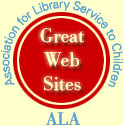
CRLS Research Guide
|
|
Using An Index
Tip Sheet 7cAsk these questions:
What is it and where is it found?
An index is an alphabetical listing of subjects found in an informational book,
along with the page numbers on which those subjects can be found. An index is usually
found at the end of a book. In the case of multi-volume encyclopedias, it is usually
contained in one or two separate volumes at the end of the set.
The CRLS Library staff can help you locate and obtain periodical articles that are more than 20 years old.
An index is your BEST FRIEND for helping you find information within books.An index is the most valuable research tool for print resources that we have. If you are looking for specific information and you pick up a book that looks interesting, but has no index, REJECT IT! Go find another book. In most cases, someone else has written just as good a book on the same topic and had the sense to index it so you can find the information you want without having to read the entire book.
The only cases in which you may need to use a book without an index are when you use primary sources or older classics written by experts in their fields.Magazines, newspapers, and journals are all called periodicals. Periodical articles from the last 20 years or so are now available online in digital format (see CRLS Library Online Resources ). Each of these online periodical sources (SIRS, InfoTrac, etc.) have indexes that enable you to search electronically by subject, key word and date.
The CRLS Library staff can help you locate and obtain periodical articles that are more than 20 years old.



